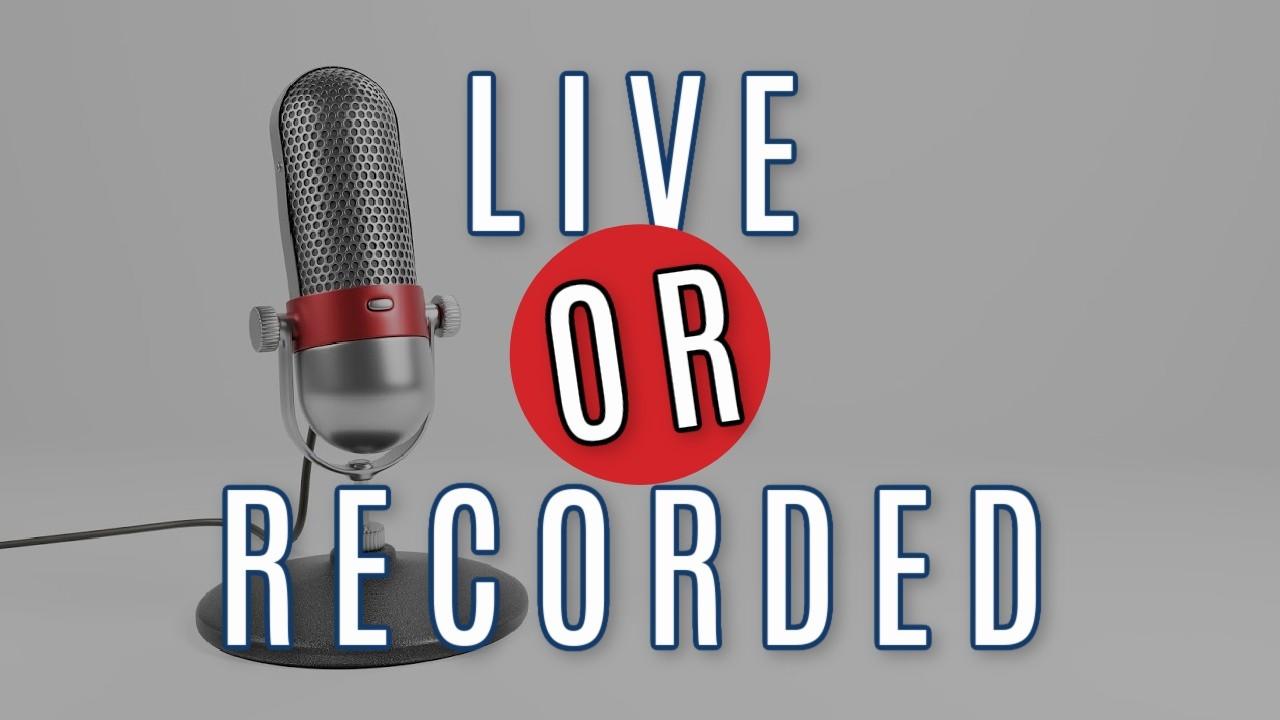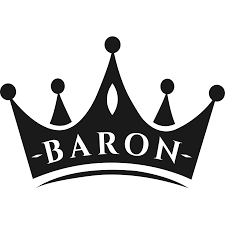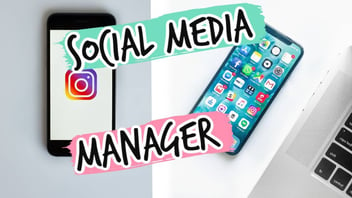
Podcasting is taking different dimensions, thank the advancing technology. Today, you can pre-record your podcast or go live and still make it to top podcasters. Podcasting keeps changing, just like radio stations are coming up with different programs to win a broader audience.
Choosing whether to opt for live or recorded podcasts, especially if you are just starting your podcasting show, can be quite challenging. In this article, we shed more light on a live and recorded podcast.
We make it easier for you to choose the most appropriate method to entertain your audience. Continue reading to find out the ups and downs of live and recorded podcasts, and decide the best for you.
What is the Difference between Recorded Podcasts and Live Radios?
On-demand vs. Schedule
The main difference between live and recorded podcasts is your audience's listening habits and the kind of schedule that you must follow. When you opt for a live podcast, there is a specific schedule that you have to stick to when addressing your audience.
For example, a typical radio show session will involve live callers, news, interviews, music, and adverts. This is quite different from a recorded podcast that may not include any of these.
If you've dedicated like two hours for a show and your audience tunes in when you're middle way to completing, it means they have missed 50% of the show. You have to reintroduce your show and keep informing your listeners about your topic of the day. That is why radio presenter will keep reintroducing themselves to listeners.
The first assumption you make when you decide to go live is that some of your listeners may tune in during the show, and you have to keep them up to date with the show.
Unlike live radio shows, with recorded podcasts, you don't have to reintroduce yourself. Your listeners can always rewind the show if they are missing anything. Listeners can stream or download a recorded podcast, which makes it more convenient for them.
Mass Appeal vs. Niche
Another key difference between recorded podcasts and live radio is the audiences they are appealing to. In most cases, live radio shows tend to focus more on a broader audience. They aim for mass appeal, and that involves coming up with a variety of content to keep different segments of listeners tuned. Live radio shows focus on various topics because they attract a larger audience with different interests.
Unlike radio shows, recorded podcasts focus on specific podcasts. For example, you can find a podcast talking about bed-sitting your toddler. Podcasts tend to have particular topics that target a group of people, limiting the number of listeners.
Those who like dogs will only follow podcasts devoted to pets. Those who listen to a podcast usually are searching for some useful information. Your listeners are likely to stumble on your podcasts when searching the internet for some helpful information.
Therefore, you must use appropriate tags, headlines, and content for your podcast if you want to make it easy for your audience to find your podcast.
Pre-Recorded Vs. Live
A clear difference between live radio and pre-recorded podcasts is that live podcasts cannot be edited once they are aired while pre-recorded podcasts are easy to adjust. That means, if your fluff in the middle of live broadcast, you may not have the chance to correct your mistake.
Although a live broadcast may include some bits of recorded content like adverts and news, most of it is live conversations.
When you opt for pre-recorded podcasts, you can record your content as often as you want and edit it to meet your specs. If you feel your voice is not that clear on a recording or you missed a line, you can easily go back and include that piece. When recording your podcast, you can stick to your script and cover everything you need.
Short –term Vs. Long- term
Another unique difference between live radio and podcasts is their longevity. Because podcasts are recorded, listeners can always stream or download them whenever they wish. Once you record your podcast, you can retain a copy of the show.
Unlike podcasts, live broadcasts are real-time. Meaning, once the show goes off, it is not possible for the listener to stream back. The listener can't stream back a live radio show and listen to outdated news and adverts.
However, today, some radio stations are coming up with smaller podcasts for their shows. They upload them on different directories for their listeners. If you missed your favorite show, you can visit the radio station's website and stream the content right on your phone or computer.
One advantage of podcasts is that they remain online forever. Whether you are on your 10th episode, you new listeners can still retrieve your first episode and follow what they missed. As long as your audience is searching for your past episodes, they can always get it online.
How to Record a Live Podcast That Sounds Nice
Podcasting is such an exciting journey that comes with a lot of challenges. There comes a time in your podcasting when you have to record a live podcast for your listeners.
This is how it happens; you've just landed yourself an interview of a lifetime with a top celebrity in your niche, and you can't let it go.
To make matters worse, the guest cannot make it to your recording studio. You are now left with no alternative – you have to take the guest and record your podcast remotely. How do you record your podcasts remotely and still ensure you get it right?
Here are the tips for recording your podcast remotely and coming up with content that keeps your listeners tuned.
1. Have the logistics
Of course, recording an audio or video podcast remotely is not going to that swift. You must have all the logistics in place.
When reaching out to your guest for the remote recording, be sure to use a more comfortable language.
You have to mention who you are and what you want them to discuss when you interview them. It's all about being polite to get some positive feedback from the guest. Sure, some guests will turn your offer down if they realize you're not professional.
Have a calendar specifying the time and venue of the live recording. Always pick a recording environment where you are both comfortable. If you are using Anchor to record your podcast, you can invite up to four people to join you by clicking on the invitation link.
2. Research first
When you have a guest to interview on a live podcast, there is never much time to waste. You have to research your guest in advance and write down some questions that you want to ask. Your interview should have a topic and some draft to guide you through the conversation.
With your topic ready, you can now practice the questions. Arrange your questions well. One question should lead to the other and make the conversation smooth. If you have a list of questions ready, you can share them with your guest in advance so that they prepare for the interview and save you some time.
3. Record in a quiet place
A perfect environment for a live podcast recording must be quiet. You must ensure it is away from noisy neighbors and pets. If you are using a high-quality microphone, it can sense any slight sound in the background, and you don't want your podcast to have that.
You can soundproof your home studio by covering your door and windows with blankets. If you have a spare bedroom or a closet, that is the best place to record your podcast. Again, you should ask your guest to find a quiet place if you are going to interview them remotely.
4. Check your connection
If you opt for remote recording, you must ensure your internet connection is working optimally. Test your Wi-Fi strength, and if possible, you can meter your connection by brining the router a bit close to your recording station. The best podcasting software requires a stable internet connection to work perfectly.
You also want to ensure your guest has a solid internet connection before you start the interview. Lastly, avoid unnecessary movements during the recording, like changing rooms.
5. Get headphones with a mic
The best way to get rid of background noise that spoils your recording is by getting a headphone with a mic. Ensure this gadget is compatible with other machines you are using.
If you cannot afford some quality headphones, then you can go for USB microphones. They are relatively cheaper. If you want to make your recording smooth, clear, and consistent, you should ensure you use the same method as your guest.
6. A video call can do it better
Sometimes you need a face-to-face connection to have a perfect interview. Some words come out well if you get to see how your guest reacts during the interview. That means you should opt for a video call when recording your podcast remotely.
Of course, your listeners will not watch the video, but they can get how you connect with your guest. This is what makes your podcast unique and engaging – being able to connect with your listeners.
The Ups and Downs of Pre- Recorded Podcasts
The most outspoken benefit of a pre-recorded podcast is the fact that it is 'evergreen.' It means that it has a long-life compared to live podcasts.
You can host the podcast on different directories such as Boomplay, YouTube, and Spotify, and your listeners can stream and download it anytime. As long as you publish the podcast, your audience can always retrieve it in the future.
When you opt for post-production of all your podcast, you can:
- Talk about any topic that you desire.
- Depending on what your topic is about, you can record for any length of time. You are not limited to the 20-minutes rule for podcasts.
- Edit your podcast before publishing it to remove any fluff, errors, and dead air.
- Have the time to adjust the sound design and improve the quality of your recording.
The ups and Downs of Live Podcasts
When you opt for live recording, you have to be a bit smart and professional. Most people resorting to live podcasts first gained experience through pre-recorded podcasts.
Live podcasts give you the chance to act like a radio presenter or audio artist. You get to interact with your environment and real people. Your listeners can call in during the live broadcast and make your podcast more engaging and real.
Live podcasting is quite a stellar solution because it helps you to establish a connection with your listeners and create a loyal audience to your podcast. You get immediate feedback from your listeners as you go live and this gives you the privilege to improve every day.
The only downside of a live podcast is that you don't get the chance to edit your content. Once it is aired, it's gone. You cannot remove the background noise, pops, hisses, or any technical errors in your live production.
It must be brief because most listeners cannot concentrate for long. You cannot talk for long when you opt for a live podcast. You'll have to play some music, adverts, or receive calls from listeners to remove boredom.
Final Thoughts
Podcasts can either be live or recorded. In most cases, you have to choose which one works best for your target audience. If you want to engage more with your listeners, a live podcast will do you well.
On the contrary, if you expect your podcast to remain relevant and retrievable for long, a pre-recorded podcast is the best option.
Ultimately, the ideal of podcasting is recording first before you can air to your listeners. The reason behind this is that you can edit your voice and ensure you deliver content within your topic. It is always essential to choose a topic that you are free and conversant with when you start a live or recorded podcast.





